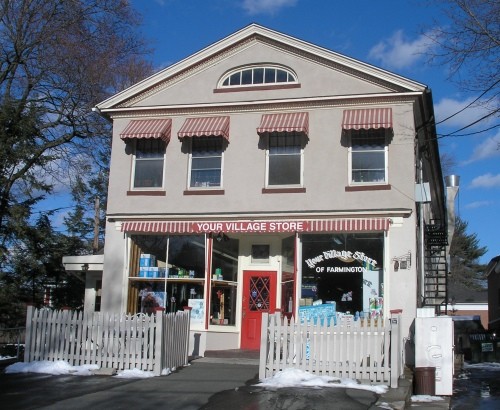Samuel Deming's Store
Introduction
Text-to-speech Audio
Images
A modern view of what was once Samuel Deming's Store

Backstory and Context
Text-to-speech Audio
Samuel and Catherine Deming were instrumental in Farmington's abolitionist movement. Samuel Deming assisted the Mendi Africans who captured control of the Armistad as part of their effort to end their enslavement. Deming assisted the Africans in their court case and supported their stay in Farmington. With his support and many others, including John Quincy Adams who served as legal counsel, the Africans won their case and were able to return to present-day Sierra-Leone.
Deming was also a member of the Farmington Anti-Slavery Society and helped found the Connecticut Anti-Slavery Society. Catherine Deming lead fundraisers and signed petitions to help both the Mendi and general abolitionist causes. Their home is now known as an Underground Railroad Safehouse. Samuel Deming's Store is included on the Farmington Freedom Trail, as its second floor was first used to house some of the male Armistad Africans and was later home to a school for those who had escaped slavery on the Armistad.
Sources
Samuel Deming's Store, Historic Buildings of Connecticut. Accessed October 16th 2020. https://historicbuildingsct.com/samuel-demings-store-1809/.
Samuel Deming House, National Park Service. Accessed October 16th 2020. https://www.nps.gov/places/samuel-deming-house.htm.
https://historicbuildingsct.com/samuel-demings-store-1809/
